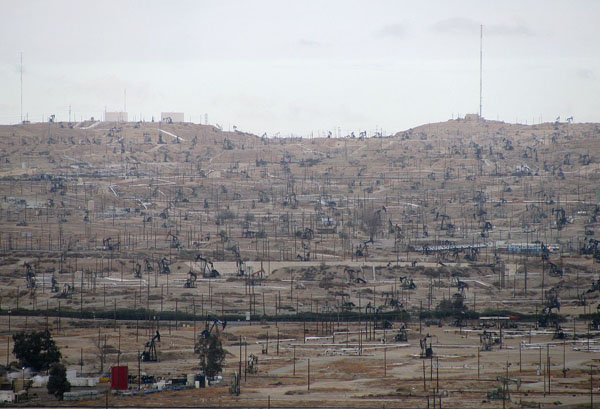Most Americans have never heard of Texas oilman George Mitchell, who died in July at the age of 94 at his home in Galveston, Texas. But Mitchell, the son of a Greek immigrant goat herder, was arguably the most important individual in America’s energy history since Thomas Edison and John D. Rockefeller. Mitchell truly was the father of the shale oil and gas revolution that is transforming the American economy as we read his obituary.
In nominating Mitchell for a Presidential Medal of Freedom last year (which the Obama administration did not award), energy guru Dan Yergin said, “It is because of him that we can talk seriously about ‘energy independence.’” Writing in USA Today, Utah State University’s William F. Shugart II said, “Thanks to his innovative genius, the United States will soon become the world’s leading producer of natural gas and by 2017 could be the leading producer of crude oil as well.”
Probably no politician, and certainly no secretary of energy from any party or administration, has had as profound an impact on the U.S. energy economy as that of Mitchell, petroleum engineer, geologist, philanthropist and advocate of sustainability in livable communities. The most important contributions came in the later years of his life, which suggests to us of advanced age that the best still might be to come.
Mitchell knew, as did many geologists, that there were hydrocarbon resources locked up in tight Devonian shale formations. Unlike other geologists, he thought he had a way to get at them. As Shugart noted, Mitchell combined two existing—and quite old—technologies into a new technique that cracked the rocks and the code to enormous energy resources.
Hydraulic fracturing had been around since the end of World War II, using water pressure to fracture oil-and-gas bearing rocks. It was used in conventional wells to increase production and add length to the wells’ productive lives. It is widely used in rural America to upgrade water wells. Horizontal drilling, Shugart observed, has been commonly used since the 1920s. “Until Mitchell came along,” he said, “no one had succeeded in using the two technologies in tandem.”
But it wasn’t cheap or easy. Mitchell worked at finding the secret of the right combination of horizontal drilling and “fracking” for 17 years and spent somewhere north of $6 million of his own money. Given his wealth, it wasn’t close to a bet the farm investment, but was significant nonetheless.
In 1998 Mitchell’s patience and money paid off, and then some. He hit enormous production of gas, amounts that stunned the industry. He sold his Mitchell Energy and Development Corp. to Devon Energy for $3 billion in 2001. And that was the start of the shale boom. It soon spread from Texas to Pennsylvania, thanks in large part to Penn State geologist Terry Engelder, who spearheaded the development of the Marcellus shale formation, which could well be the second largest natural gas field in the world.
But Mitchell wasn’t just an oil and gas man. Earlier in his career, and a little-known aspect of his story, Mitchell in 1974 turned 27,000 acres of forestland north of Houston into The Woodlands, an attempt to create an environmentally friendly and responsible planned community, which he sold in 1997 for $543 million. He later became friends with business information tycoon Michael Bloomberg, who became New York’s multi-partisan mayor. The two collaborated recently to promote safe and sensible fracking policies, although New York State has so-far banned shale gas production.
Among many philanthropic ventures, late in his life Mitchell endowed the George P. and Cynthia Mitchell Center for Research on Alzheimer’s Disease and Related Brain Disorders at the University of Texas Medical School in Texas, in honor of his beloved wife of over 50 years, who died of Alzheimer’s in 2009. Another notable endeavor is the Cynthia and George Mitchell Foundation, begun in 1978, which supports “high-impact projects at the nexus of environmental protection, social equity, and economic vibrancy.”
George Mitchell’s father arrived in the U.S. from Greece as a penniless immigrant in 1901, working his way from Ellis Island to Texas as a laborer and changing his name to Mitchell from Paraskevopoulos in order to assimilate more easily into the U.S. economy and culture. It’s the classic American dream story.
George was born in 1919, eventually enrolling at Texas A&M University, where he finished first in his petroleum engineering class (and tennis team captain). After working for Big Oil in Texas and Louisiana, he joined the Army Corps of Engineers in World War II.
Upon his Army discharge, Mitchell started a successful oil-and-gas wildcatting firm. The rest is energy history, and George Mitchell is a gigantic figure in the story of America’s reemergence as a giant of oil and natural gas, thanks to horizontal drilling, hydraulic fracturing, and Devonian shale. And, of course, to George Mitchell.
—Kennedy Maize is MANAGING POWER’s executive editor.









